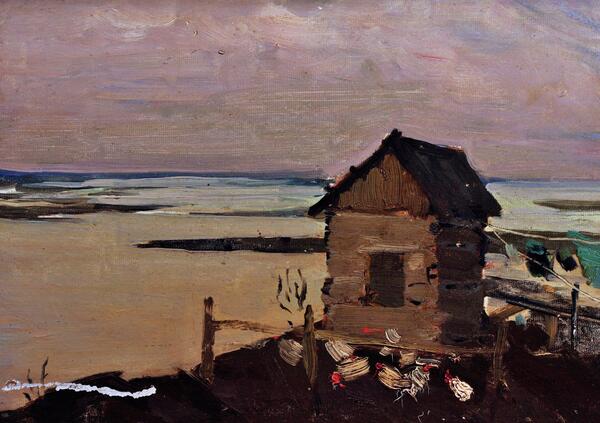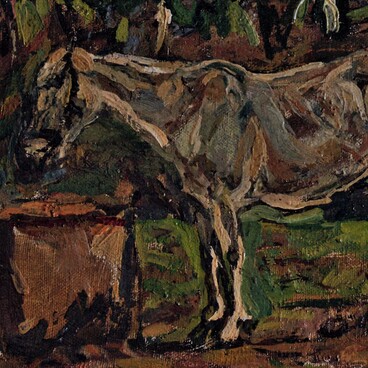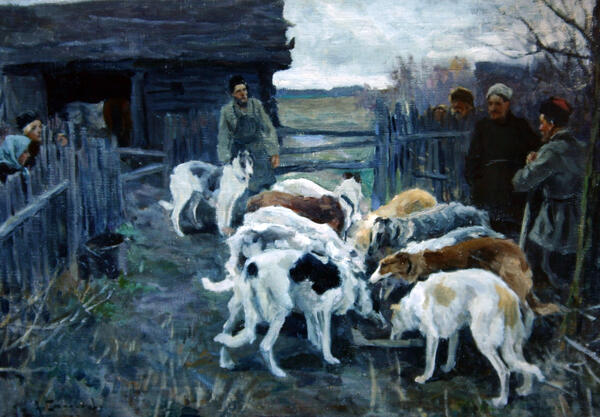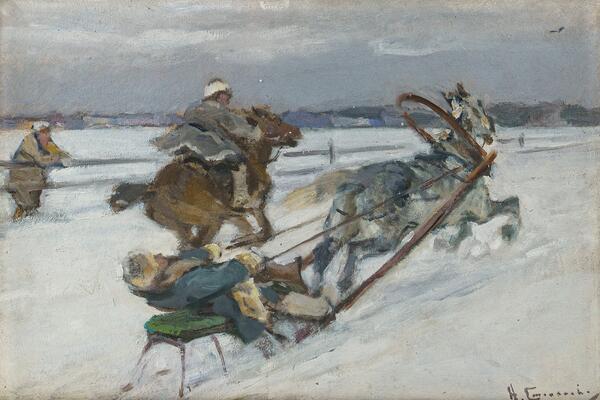Alexey Stepanov was born in 1858 in Simferopol in the family of an officer, a participant of the Crimean War. He lost his parents early, and from the age of seven the future painter was brought up by his guardian. Stepanov’s creative path was not an easy one: he first graduated from the Surveyor’s Institute in Moscow and became a surveyor as his guardian insistedguar. But then he decided to take up art and became first a non-matriculated student and then a regular student of the Moscow School of Painting, Sculpture and Architecture. His teachers were the painters Illarion Pryanishnikov and Yevgraf Sorokin.
The first success came to Stepanov in 1889, when he exhibited his painting “Elks Eating Hay in Winter”. The canvas was bought for his collection by Pavel Tretyakov, and soon the artist was accepted as a full member of the Association of Traveling Art Exhibitions. Most of all Stepanov liked to paint rural nature, peasant children, and hunting scenes.
“Booth at the Pier” is a lyrical landscape that depicts a wooden structure on the steep riverbank. In the foreground, there are hens and clean laundry fluttering on a rope, while a pink sunset, reflected in a wide river, is visible in the background. The painting was in the style of plein air, as if Stepanov painted it from nature, outdoors, and was in a hurry before it got dark. This feeling was complemented by broad sketchy transparent strokes and a soft restrained color palette.
The first success came to Stepanov in 1889, when he exhibited his painting “Elks Eating Hay in Winter”. The canvas was bought for his collection by Pavel Tretyakov, and soon the artist was accepted as a full member of the Association of Traveling Art Exhibitions. Most of all Stepanov liked to paint rural nature, peasant children, and hunting scenes.
“Booth at the Pier” is a lyrical landscape that depicts a wooden structure on the steep riverbank. In the foreground, there are hens and clean laundry fluttering on a rope, while a pink sunset, reflected in a wide river, is visible in the background. The painting was in the style of plein air, as if Stepanov painted it from nature, outdoors, and was in a hurry before it got dark. This feeling was complemented by broad sketchy transparent strokes and a soft restrained color palette.










